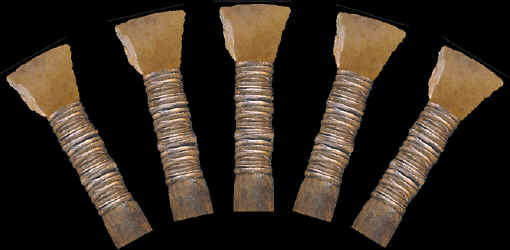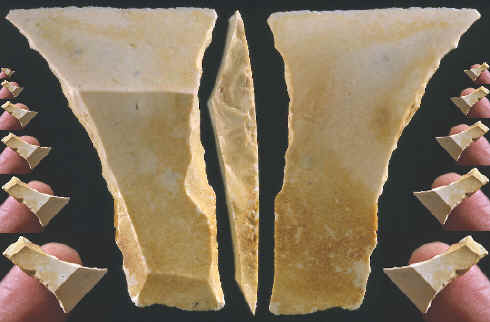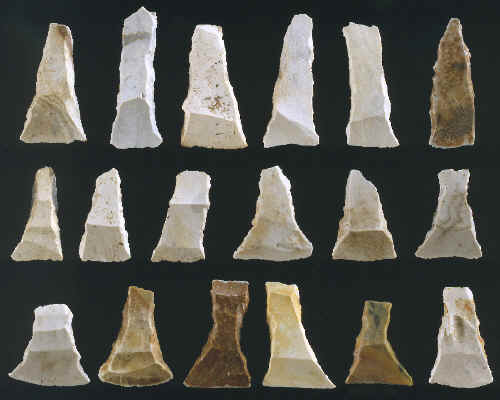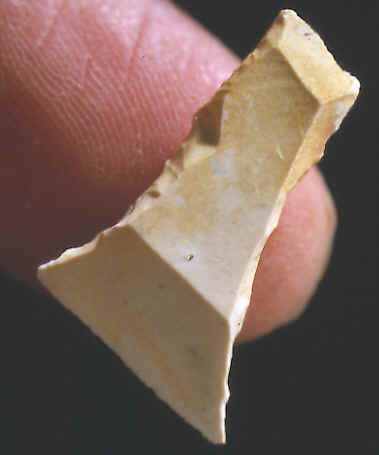|
|
|
|
|
Obviously the "pygmy industry" cannot represent the sole efforts at flint-chipping of any Stone Age community. For unless Tardenoisian man was the size of a squirrel, he would have needed flint implements of the ordinary size for ordinary purposes, using the "pygmies" for such special purposes as they were intended to serve.---1921, R.A.S. Macalister.
The above statement about the "pygmy industry" by Macalister in his chapter on the Mesolithic period in "A Textbook of European Archaeology" in 1921 concerns the microlithic industry. At that time the archaeologists of the day were still trying to understand what the little geometrically shaped "minute splinters of flint, rarely measuring so much as an inch in length", were used for. Some theories at that time suggested that they were used for surgical instruments, tattooing or maybe even arrowheads. The latter theory we now know to be accurate for at least some varieties of them because at least two or more have been found still attached to the ends of arrow shafts. Microliths are now generally interpreted as elements of hunting equipment. The term "microliths" is a convenient descriptive term that has been accepted world-wide for lithic industries that produced small stone implements that measure approximately 3 cm (1 3/16 inch) or less. The most common forms of microliths are believed to be projectile points and barbs for arrowheads and harpoons. They were also mounted as side blades on sickles and scrapers. Early descriptions of Mesolithic period microliths described them as "pygmy flints" and Tardenoisian flints". |
|
|
Transverse arrowheads are oddly shaped. They don't look anything like everyone's traditional idea of an arrow point that has a sharp point on the end with cutting edges on the sides. Transverse points have no pointed ends. They were made for piercing along a sharp segment of a blade edge rather than by a sharp point. This style of projectile point is not unique to the Stone Age. Transverse arrowheads made of iron were also used by later cultures. One example for this is the Luchaze tribe in north western Rhodesia. |
|
| CONTINUE ON TO PAGE TWO | |
|
"REFERENCES"
1921,
"A Text-Book of European Archaeology", Vol. I The Paleolithic
Period, by R. A. S. Macalister, pp. 535, 536. |
|




